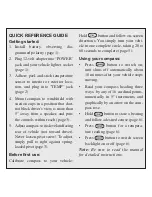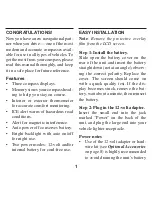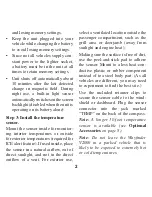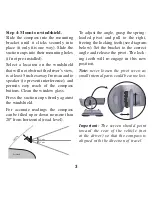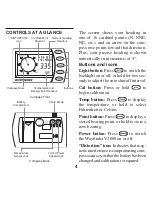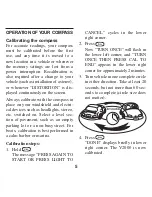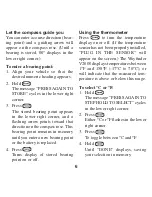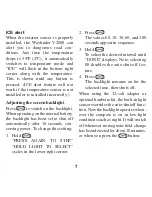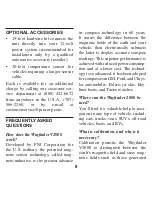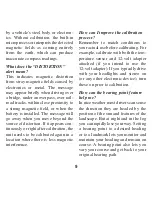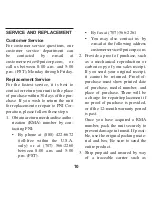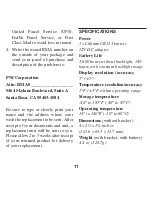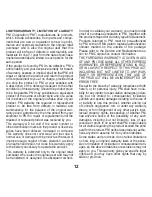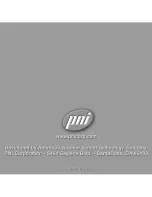
9
by a vehicle’s steel body or electron-
ics. Without calibration, the built-in
microprocessor interprets the detected
magnetic fields as coming entirely
from the earth, which can produce
inaccurate compass readings.
What does the “DISTORTION”
alert mean?
This indicates magnetic distortion
from stray magnetic fields caused by
electronics or metal. The message
may appear briefly when driving over
a bridge, under an overpass, over rail-
road tracks, within close proximity to
a strong magnetic field, or when the
battery is installed. The message will
go away when you move beyond the
source of distortion. If it appears con-
tinuously or right after calibration, the
unit needs to be calibrated again in a
location where there is less magnetic
interference.
How can I improve the calibration
process?
Remember to match conditions to
your actual use before calibrating. For
example, calibrate with both the tem-
perature sensor and 12-volt adapter
attached (if you intend to use the
12-volt adapter). If you typically drive
with your headlights and stereo on
(or any other electronic device), turn
these on prior to calibration.
How can the bearing point feature
help me?
In nice weather most drivers can sense
the direction they are headed by the
position of the sun and features of the
landscape. But at night and in the fog
you can rapidly lose your way. Setting
a bearing point to a desired heading
or to a landmark lets you monitor and
maintain your heading and remain on
course. A bearing point also lets you
vary your course and get back to your
original bearing path.


